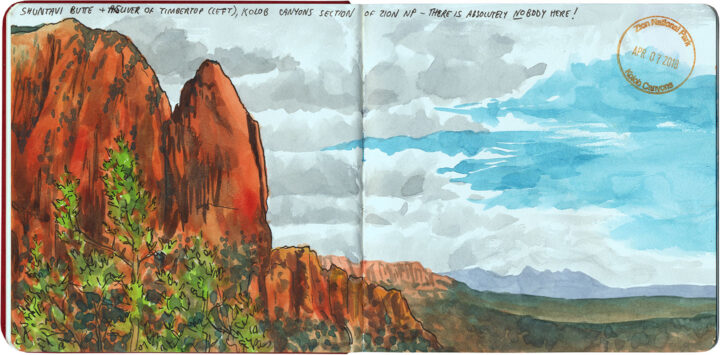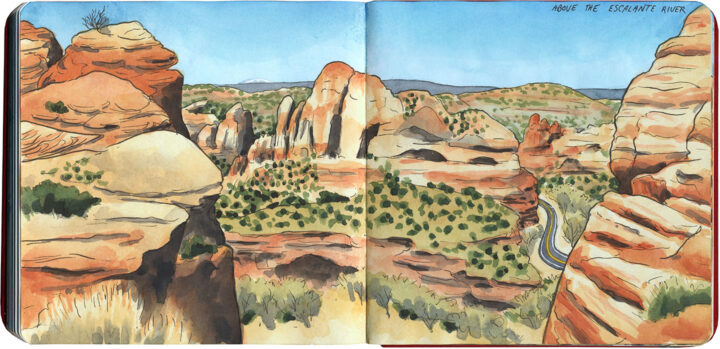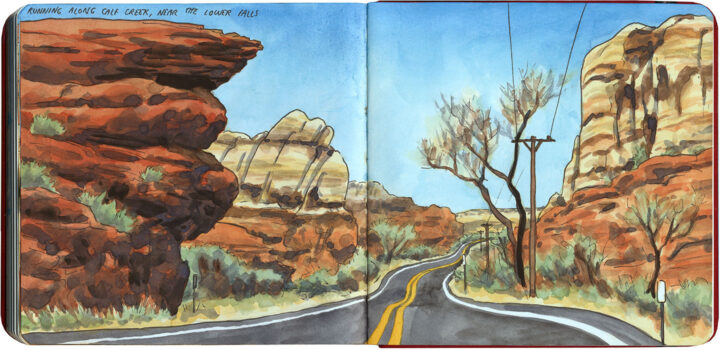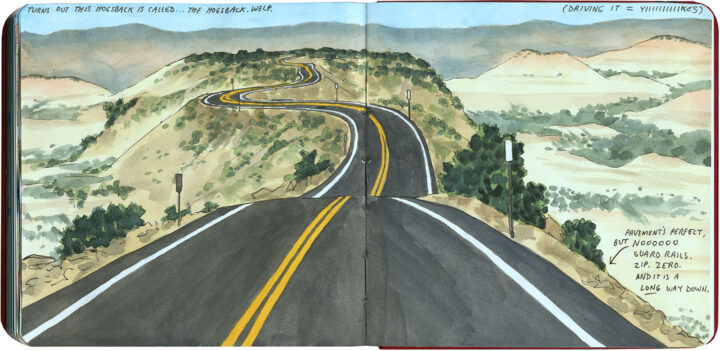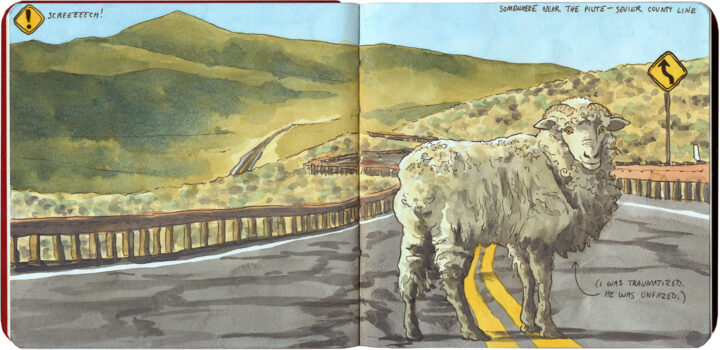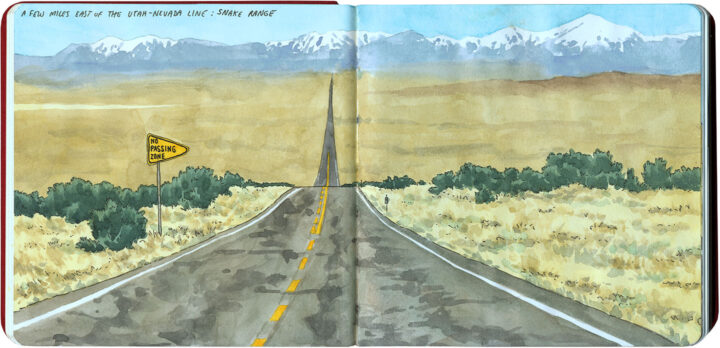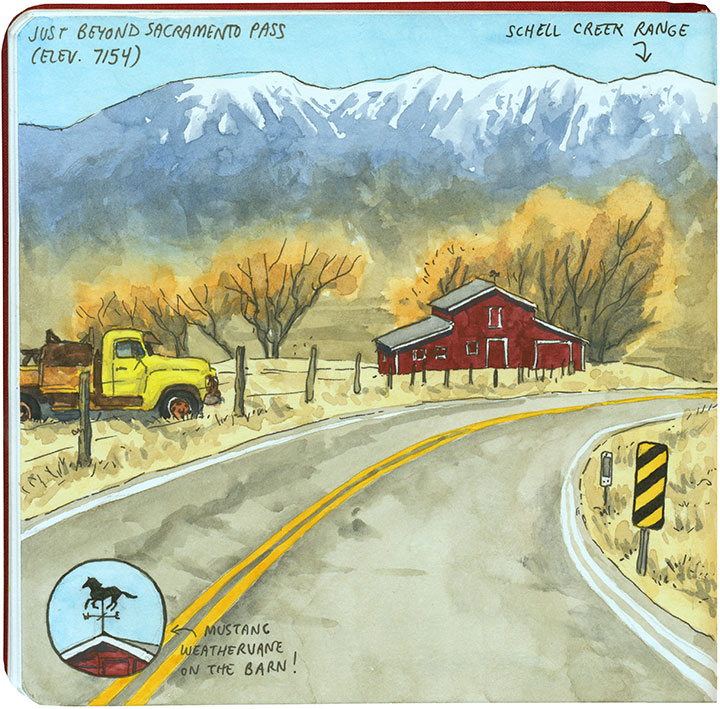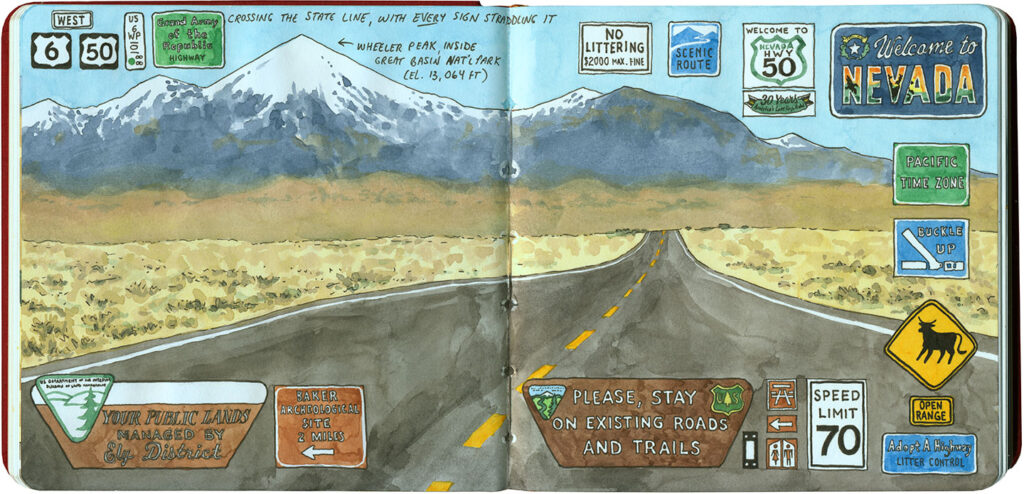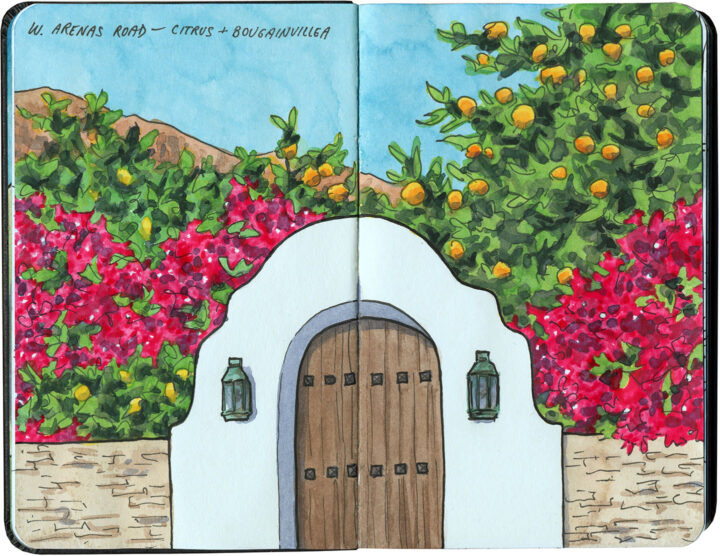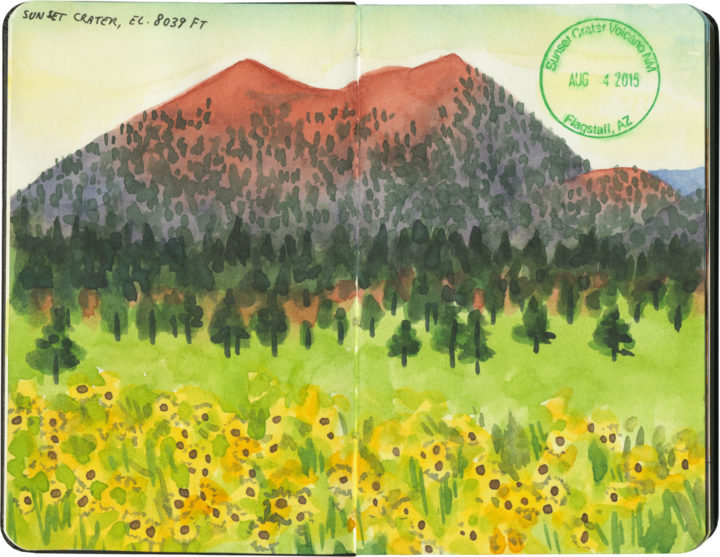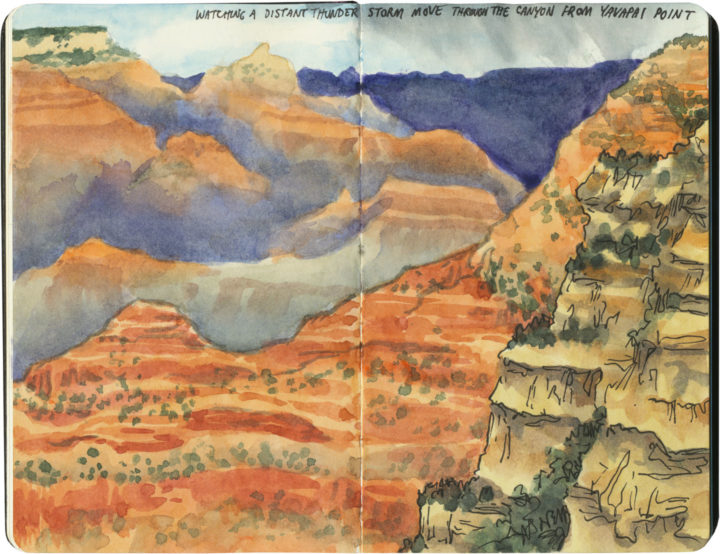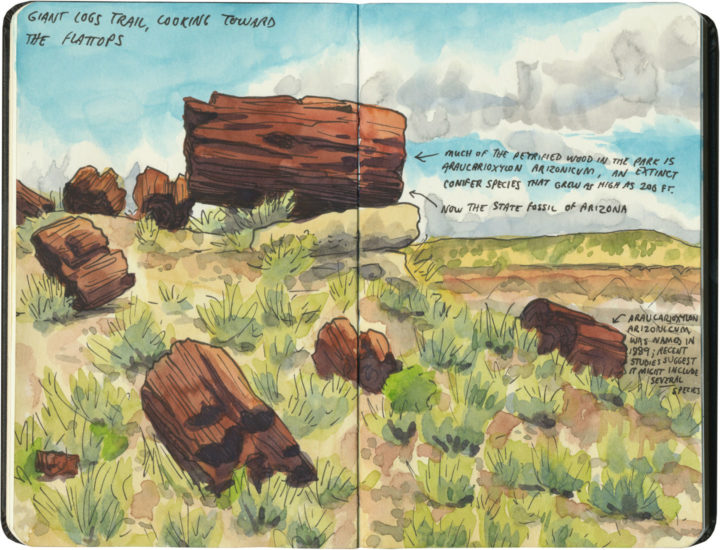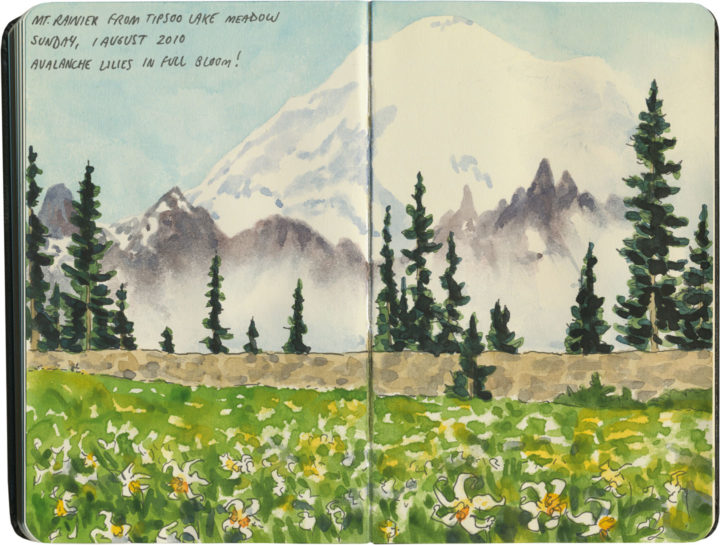Mt. Rainier National Park, WA
Tomorrow is the 100th birthday of the National Park Service. All of America seems to be celebrating right now, and rightly so. In my opinion, our wildest pockets are our true national treasures, and our national parks, as Wallace Stegner said, our best idea.

Olympic National Park, WA
So since I’ve spent a good chunk of my sketching life in national parks both close to home…

Arches National Park, UT
…and far afield…

Crater Lake National Park, OR
I figured I’d add my voice to the celebratory din, in the form of a little sketchbook retrospective.

Badlands National Park, SD
Beyond the centennial itself, I’m always up for toasting the parks. Not only do I think park rangers are the best people on earth,

Redwood National Park, CA
but I also sometimes think they’re the only thing standing between wildness and destruction.

Carlsbad Caverns National Park, NM
And anyway, I’m not exaggerating when I say I’m a total park nut myself. It’s my goal to visit every NPS property before I die, including national parks, historic sites, national monuments, everything. (Actually, I’ve crossed a goodly chunk of them off the list already—

Guadalupe Mountains National Park, TX
—and I even have the stamps to prove it.)

Olympic National Park, WA
I know I have a long path ahead of me before I reach that goal,

Grand Canyon National Park, AZ
and getting there won’t be easy.

Big Bend National Park, TX
Yet I can’t tell you how grateful I am that the opportunity exists in the first place—

Rocky Mountain National Park, CO
that so many people have fought to preserve these wild places, and won.

Saguaro National Park, AZ
Best of all is the feeling that no matter how long it might take me to get to each park with my sketchbook,

Glacier National Park, MT
I know it’ll be there waiting for me, as close to unchanged as humanly possible. Thanks to the National Park Service, the window of opportunity remains open.
Save
Save
Save
Save
Save
Save
Save
Save

